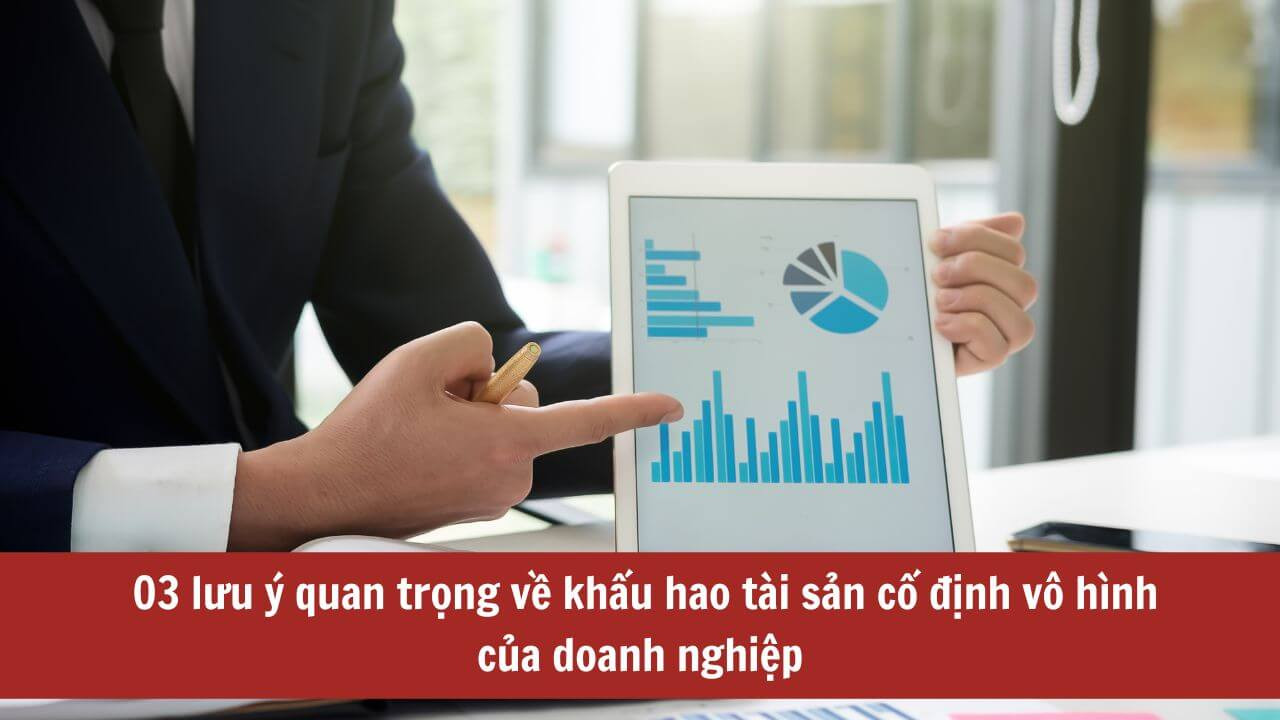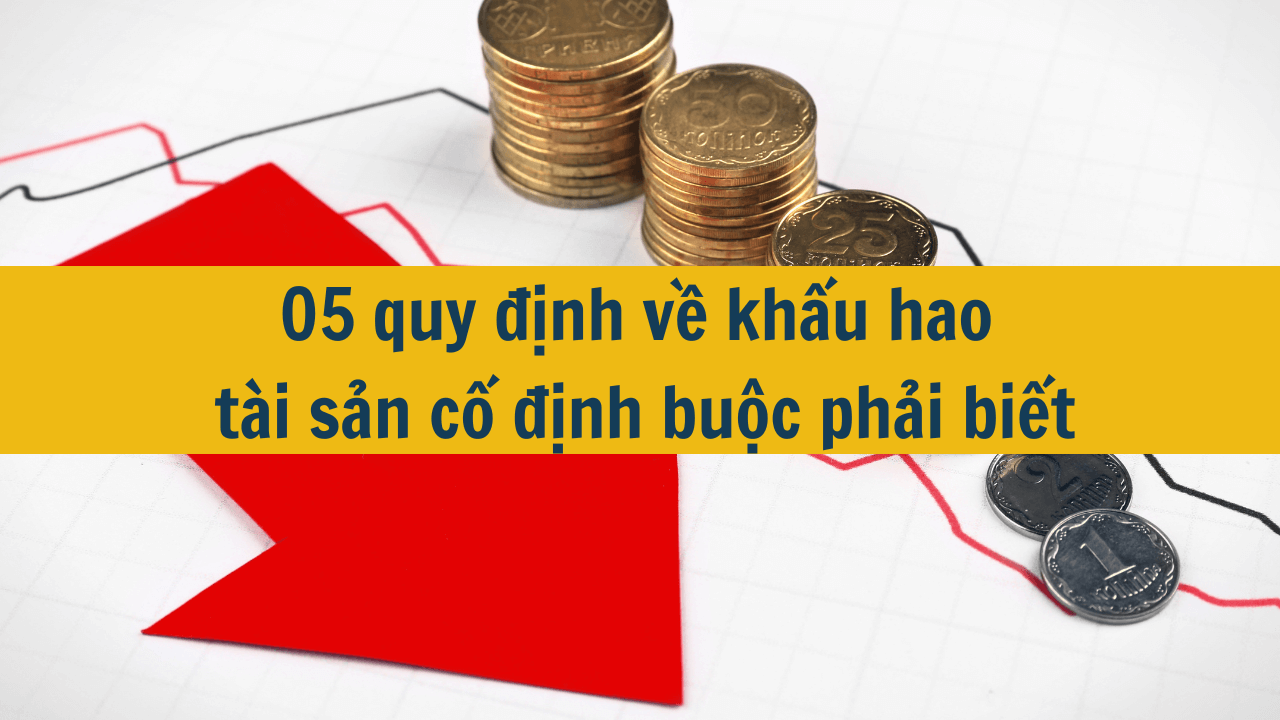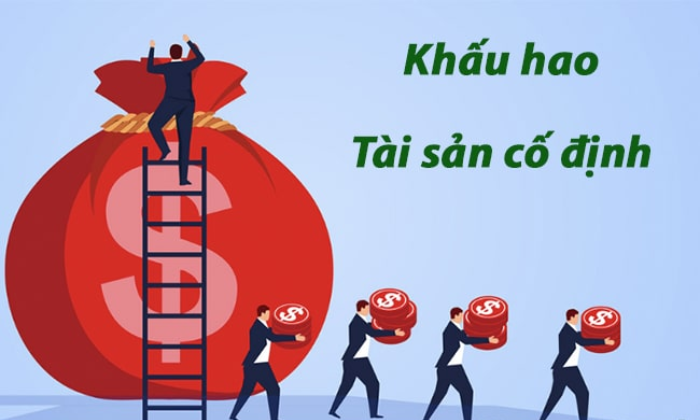 Tìm kiếm
Tìm kiếm
Chương III Thông tư 45/2013/TT-BTC: Quy định về trích khấu hao tài sản cố định
| Số hiệu: | 45/2013/TT-BTC | Loại văn bản: | Thông tư |
| Nơi ban hành: | Bộ Tài chính | Người ký: | Trần Văn Hiếu |
| Ngày ban hành: | 25/04/2013 | Ngày hiệu lực: | 10/06/2013 |
| Ngày công báo: | 19/05/2013 | Số công báo: | Từ số 277 đến số 278 |
| Lĩnh vực: | Doanh nghiệp, Thuế - Phí - Lệ Phí, Kế toán - Kiểm toán | Tình trạng: | Còn hiệu lực |
TÓM TẮT VĂN BẢN
Quy định mới về xác định tài sản cố định
Các tài sản có giá trị từ 30 triệu đồng trở lên mới được xác định là tài sản cố định và thực hiện trích khấu hao, trước đây mức giá trị này là 10 triệu đồng.
Nội dung trên quy định tại Thông tư 45/2013/TT-BTC hướng dẫn về chế độ quản lý, sử dụng và trích khấu hao tài sản cố định.
Thông tư cũng có thêm một số quy định mới trong chế độ quản lý tài sản cố định vô hình:
+ Quyền sử dụng đất thuê trước ngày 01-7-2004 mà đã trả tiền thuê đất cho cả thời gian thuê hoặc đã trả trước tiền thuê đất cho nhiều năm mà thời hạn thuê đất đã được trả tiền còn lại ít nhất là năm năm và được cấp GCN quyền sử dụng đất cũng được xem là TSCĐ vô hình.
+ Các chi phí mua để có và sử dụng các tài liệu kỹ thuật, bằng sáng chế, giấy phép chuyển giao công nghệ, nhãn hiệu thương mại không phải là TSCĐ vô hình.
Thông tư 45 thay thế Thông tư 203/2009/TT-BTC và có hiệu lực kể từ 10/06/2013.
Văn bản tiếng việt
Văn bản tiếng anh
1. Tất cả TSCĐ hiện có của doanh nghiệp đều phải trích khấu hao, trừ những TSCĐ sau đây:
- TSCĐ đã khấu hao hết giá trị nhưng vẫn đang sử dụng vào hoạt động sản xuất kinh doanh.
- TSCĐ khấu hao chưa hết bị mất.
- TSCĐ khác do doanh nghiệp quản lý mà không thuộc quyền sở hữu của doanh nghiệp (trừ TSCĐ thuê tài chính).
- TSCĐ không được quản lý, theo dõi, hạch toán trong sổ sách kế toán của doanh nghiệp.
- TSCĐ sử dụng trong các hoạt động phúc lợi phục vụ người lao động của doanh nghiệp (trừ các TSCĐ phục vụ cho người lao động làm việc tại doanh nghiệp như: nhà nghỉ giữa ca, nhà ăn giữa ca, nhà thay quần áo, nhà vệ sinh, bể chứa nước sạch, nhà để xe, phòng hoặc trạm y tế để khám chữa bệnh, xe đưa đón người lao động, cơ sở đào tạo, dạy nghề, nhà ở cho người lao động do doanh nghiệp đầu tư xây dựng).
- TSCĐ từ nguồn viện trợ không hoàn lại sau khi được cơ quan có thẩm quyền bàn giao cho doanh nghiệp để phục vụ công tác nghiên cứu khoa học.
- TSCĐ vô hình là quyền sử dụng đất lâu dài có thu tiền sử dụng đất hoặc nhận chuyển nhượng quyền sử dụng đất lâu dài hợp pháp.
2. Các khoản chi phí khấu hao tài sản cố định được tính vào chi phí hợp lý khi tính thuế thu nhập doanh nghiệp thực hiện theo quy định tại các văn bản pháp luật về thuế thu nhập doanh nghiệp.
3. Trường hợp TSCĐ sử dụng trong các hoạt động phúc lợi phục vụ cho người lao động của doanh nghiệp quy định tại khoản 1 Điều 9 Thông tư này có tham gia hoạt động sản xuất kinh doanh thì doanh nghiệp căn cứ vào thời gian và tính chất sử dụng các tài sản cố định này để thực hiện tính và trích khấu hao vào chi phí kinh doanh của doanh nghiệp và thông báo cho cơ quan thuế trực tiếp quản lý để theo dõi, quản lý.
4. TSCĐ chưa khấu hao hết bị mất, bị hư hỏng mà không thể sửa chữa, khắc phục được, doanh nghiệp xác định nguyên nhân, trách nhiệm bồi thường của tập thể, cá nhân gây ra. Chênh lệch giữa giá trị còn lại của tài sản với tiền bồi thường của tổ chức, cá nhân gây ra, tiền bồi thường của cơ quan bảo hiểm và giá trị thu hồi được (nếu có), doanh nghiệp dùng Quỹ dự phòng tài chính để bù đắp. Trường hợp Quỹ dự phòng tài chính không đủ bù đắp, thì phần chênh lệch thiếu doanh nghiệp được tính vào chi phí hợp lý của doanh nghiệp khi xác định thuế thu nhập doanh nghiệp.
5. Doanh nghiệp cho thuê TSCĐ hoạt động phải trích khấu hao đối với TSCĐ cho thuê.
6. Doanh nghiệp thuê TSCĐ theo hình thức thuê tài chính (gọi tắt là TSCĐ thuê tài chính) phải trích khấu hao TSCĐ đi thuê như TSCĐ thuộc sở hữu của doanh nghiệp theo quy định hiện hành. Trường hợp ngay tại thời điểm khởi đầu thuê tài sản, doanh nghiệp thuê TSCĐ thuê tài chính cam kết không mua lại tài sản thuê trong hợp đồng thuê tài chính, thì doanh nghiệp đi thuê được trích khấu hao TSCĐ thuê tài chính theo thời hạn thuê trong hợp đồng.
7. Trường hợp đánh giá lại giá trị TSCĐ đã hết khấu hao để góp vốn, điều chuyển khi chia tách, hợp nhất, sáp nhập thì các TSCĐ này phải được các tổ chức định giá chuyên nghiệp xác định giá trị nhưng không thấp hơn 20% nguyên giá tài sản đó. Thời điểm trích khấu hao đối với những tài sản này là thời điểm doanh nghiệp chính thức nhận bàn giao đưa tài sản vào sử dụng và thời gian trích khấu hao từ 3 đến 5 năm. Thời gian cụ thể do doanh nghiệp quyết định nhưng phải thông báo với cơ quan thuế trước khi thực hiện.
Đối với các doanh nghiệp thực hiện cổ phần hóa, thời điểm trích khấu hao của các TSCĐ nói trên là thời điểm doanh nghiệp được cấp Giấy chứng nhận đăng ký kinh doanh chuyển thành công ty cổ phần.
8. Các doanh nghiệp 100% vốn nhà nước thực hiện xác định giá trị doanh nghiệp để cổ phần hoá theo phương pháp dòng tiền chiết khấu (DCF) thì phần chênh lệch tăng của vốn nhà nước giữa giá trị thực tế và giá trị ghi trên sổ sách kế toán không được ghi nhận là TSCĐ vô hình và được phân bổ dần vào chi phí sản xuất kinh doanh trong kỳ nhưng thời gian không quá 10 năm. Thời điểm bắt đầu phân bổ vào chi phí là thời điểm doanh nghiệp chính thức chuyển thành công ty cổ phần (có giấy chứng nhận đăng ký kinh doanh).
9. Việc trích hoặc thôi trích khấu hao TSCĐ được thực hiện bắt đầu từ ngày (theo số ngày của tháng) mà TSCĐ tăng hoặc giảm. Doanh nghiệp thực hiện hạch toán tăng, giảm TSCĐ theo quy định hiện hành về chế độ kế toán doanh nghiệp.
10. Đối với các công trình xây dựng cơ bản hoàn thành đưa vào sử dụng, doanh nghiệp đã hạch toán tăng TSCĐ theo giá tạm tính do chưa thực hiện quyết toán. Khi quyết toán công trình xây dựng cơ bản hoàn thành có sự chênh lệch giữa giá trị tạm tính và giá trị quyết toán, doanh nghiệp phải điều chỉnh lại nguyên giá tài sản cố định theo giá trị quyết toán đã được cấp có thẩm quyền phê duyệt. Doanh nghiệp không phải điều chỉnh lại mức chi phí khấu hao đã trích kể từ thời điểm tài sản cố định hoàn thành, bàn giao đưa vào sử dụng đến thời điểm quyết toán được phê duyệt. Chi phí khấu hao sau thời điểm quyết toán được xác định trên cơ sở lấy giá trị quyết toán tài sản cố định được phê duyệt trừ (-) số đã trích khấu hao đến thời điểm phê duyệt quyết toán tài sản cố định chia (:) thời gian trích khấu hao còn lại của tài sản cố định theo quy định.
11. Đối với các tài sản cố định doanh nghiệp đang theo dõi, quản lý và trích khấu hao theo Thông tư số 203/2009/TT-BTC nay không đủ tiêu chuẩn về nguyên giá tài sản cố định theo quy định tại Điều 2 của Thông tư này thì giá trị còn lại của các tài sản này được phân bổ vào chi phí sản xuất kinh doanh của doanh nghiệp, thời gian phân bổ không quá 3 năm kể từ ngày có hiệu lực thi hành của Thông tư này.
1. Đối với tài sản cố định còn mới (chưa qua sử dụng), doanh nghiệp phải căn cứ vào khung thời gian trích khấu hao tài sản cố định quy định tại Phụ lục 1 ban hành kèm theo Thông tư này để xác định thời gian trích khấu hao của tài sản cố định.
2. Đối với tài sản cố định đã qua sử dụng, thời gian trích khấu hao của tài sản cố định được xác định như sau:
|
Thời gian trích khấu hao của TSCĐ |
=
|
Giá trị hợp lý của TSCĐ |
x
|
Thời gian trích khấu hao của TSCĐ mới cùng loại xác định theo Phụ lục 1 (ban hành kèm theo Thông tư này) |
|
Giá bán của TSCĐ cùng loại mới 100% (hoặc của TSCĐ tương đương trên thị trường) |
Trong đó: Giá trị hợp lý của TSCĐ là giá mua hoặc trao đổi thực tế (trong trường hợp mua bán, trao đổi), giá trị còn lại của TSCĐ hoặc giá trị theo đánh giá của tổ chức có chức năng thẩm định giá (trong trường hợp được cho, được biếu, được tặng, được cấp, được điều chuyển đến ) và các trường hợp khác.
3. Thay đổi thời gian trích khấu hao tài sản cố định:
a) Trường hợp doanh nghiệp muốn xác định thời gian trích khấu hao của tài sản cố định mới và đã qua sử dụng khác so với khung thời gian trích khấu hao quy định tại Phụ lục 1 ban hành kèm theo Thông tư này, doanh nghiệp phải lập phương án thay đổi thời gian trích khấu hao tài sản cố định trên cơ sở giải trình rõ các nội dung sau:
- Tuổi thọ kỹ thuật của TSCĐ theo thiết kế;
- Hiện trạng TSCĐ (thời gian TSCĐ đã qua sử dụng, thế hệ tài sản, tình trạng thực tế của tài sản);
- Ảnh hưởng của việc tăng, giảm khấu hao TSCĐ đến kết quả sản xuất kinh doanh và nguồn vốn trả nợ các tổ chức tín dụng.
- Đối với các tài sản hình thành từ dự án đầu tư theo hình thức B.O.T, B.C.C thì doanh nghiệp phải bổ sung thêm Hợp đồng đã ký với chủ đầu tư.
b) Thẩm quyền phê duyệt Phương án thay đổi thời gian trích khấu hao của tài sản cố định:
- Bộ Tài chính phê duyệt đối với:
+ Công ty mẹ các Tập đoàn kinh tế, Tổng công ty, công ty do nhà nước nắm giữ từ 51% vốn điều lệ trở lên do các Bộ ngành, Thủ tướng Chính phủ quyết định thành lập.
+ Các công ty con do Công ty mẹ Tập đoàn kinh tế, Tổng công ty nắm giữ 51% vốn điều lệ trở lên.
- Sở Tài chính các tỉnh, thành phố trực thuộc Trung ương phê duyệt đối với các Tổng công ty, công ty độc lập do Uỷ ban nhân dân tỉnh, thành phố trực thuộc Trung ương quyết định thành lập, các doanh nghiệp thuộc các thành phần kinh tế khác có trụ sở chính trên địa bàn.
Trên cơ sở Phương án thay đổi thời gian trích khấu hao tài sản cố định đã được cấp có thẩm quyền phê duyệt, trong thời hạn 20 ngày kể từ ngày được phê duyệt Phương án, doanh nghiệp phải thông báo với cơ quan thuế trực tiếp quản lý để theo dõi, quản lý.
c) Doanh nghiệp chỉ được thay đổi thời gian trích khấu hao TSCĐ một lần đối với một tài sản. Việc kéo dài thời gian trích khấu hao của TSCĐ bảo đảm không vượt quá tuổi thọ kỹ thuật của TSCĐ và không làm thay đổi kết quả kinh doanh của doanh nghiệp từ lãi thành lỗ hoặc ngược lại tại năm quyết định thay đổi. Trường hợp doanh nghiệp thay đổi thời gian trích khấu hao TSCĐ không đúng quy định thì Bộ Tài chính, cơ quan thuế trực tiếp quản lý yêu cầu doanh nghiệp xác định lại theo đúng quy định.
4. Trường hợp có các yếu tố tác động (như việc nâng cấp hay tháo dỡ một hay một số bộ phận của tài sản cố định) nhằm kéo dài hoặc rút ngắn thời gian sử dụng đã xác định trước đó của tài sản cố định, doanh nghiệp tiến hành xác định lại thời gian trích khấu hao của tài sản cố định theo ba tiêu chuẩn nêu trên tại thời điểm hoàn thành nghiệp vụ phát sinh, đồng thời phải lập biên bản nêu rõ các căn cứ làm thay đổi thời gian trích khấu hao, trình cấp có thẩm quyền quyết định theo quy định tại tiết b khoản 3 Điều này.
1. Doanh nghiệp tự xác định thời gian trích khấu hao của tài sản cố định vô hình nhưng tối đa không quá 20 năm.
2. Đối với TSCĐ vô hình là giá trị quyền sử dụng đất có thời hạn, quyền sử dụng đất thuê, thời gian trích khấu hao là thời gian được phép sử dụng đất của doanh nghiệp.
3. Đối với TSCĐ vô hình là quyền tác giả, quyền sở hữu trí tuệ, quyền đối với giống cây trồng, thì thời gian trích khấu hao là thời hạn bảo hộ được ghi trên văn bằng bảo hộ theo quy định (không được tính thời hạn bảo hộ được gia hạn thêm).
1. Đối với dự án đầu tư theo hình thức Xây dựng - Kinh doanh - Chuyển giao (B.O.T); Dự án hợp đồng hợp tác kinh doanh (B.C.C), thì thời gian trích khấu hao tài sản cố định được xác định từ thời điểm đưa tài sản cố định vào sử dụng đến khi kết thúc dự án. Trường hợp các dự án trên có phát sinh doanh thu không đều trong các năm thực hiện dự án mà việc tính khấu hao theo nguyên tắc trên làm ảnh hưởng đến kết quả kinh doanh của doanh nghiệp thì doanh nghiệp báo cáo Bộ Tài chính xem xét quyết định việc tăng, giảm khấu hao theo quy định tại khoản 3 Điều 10 của Thông tư này.
2. Đối với dây chuyền sản xuất có tính đặc thù quân sự và trực tiếp thực hiện nhiệm vụ quốc phòng, an ninh tại các công ty quốc phòng, công ty an ninh, thì căn cứ vào quy định tại Thông tư này, Bộ Quốc phòng, Bộ Công An quyết định khung thời gian trích khấu hao của các tài sản này.
1. Các phương pháp trích khấu hao:
a) Phương pháp khấu hao đường thẳng.
b) Phương pháp khấu hao theo số dư giảm dần có điều chỉnh.
c) Phương pháp khấu hao theo số lượng, khối lượng sản phẩm.
2. Căn cứ khả năng đáp ứng các điều kiện áp dụng quy định cho từng phương pháp trích khấu hao tài sản cố định, doanh nghiệp được lựa chọn các phương pháp trích khấu hao phù hợp với từng loại tài sản cố định của doanh nghiệp:
a) Phương pháp khấu hao đường thẳng là phương pháp trích khấu hao theo mức tính ổn định từng năm vào chi phí sản xuất kinh doanh của doanh nghiệp của tài sản cố định tham gia vào hoạt động kinh doanh.
Doanh nghiệp hoạt động có hiệu quả kinh tế cao được khấu hao nhanh nhưng tối đa không quá 2 lần mức khấu hao xác định theo phương pháp đường thẳng để nhanh chóng đổi mới công nghệ. Tài sản cố định tham gia vào hoạt động kinh doanh được trích khấu hao nhanh là máy móc, thiết bị; dụng cụ làm việc đo lường, thí nghiệm; thiết bị và phương tiện vận tải; dụng cụ quản lý; súc vật, vườn cây lâu năm. Khi thực hiện trích khấu hao nhanh, doanh nghiệp phải đảm bảo kinh doanh có lãi. Trường hợp doanh nghiệp trích khấu hao nhanh vượt 2 lần mức quy định tại khung thời gian sử dụng tài sản cố định nêu tại Phụ lục 1 kèm theo Thông tư này, thì phần trích vượt mức khấu hao nhanh (quá 2 lần) không được tính vào chi phí hợp lý khi tính thuế thu nhập trong kỳ.
b) Phương pháp khấu hao theo số dư giảm dần có điều chỉnh:
Phương pháp khấu hao theo số dư giảm dần có điều chỉnh được áp dụng đối với các doanh nghiệp thuộc các lĩnh vực có công nghệ đòi hỏi phải thay đổi, phát triển nhanh.
TSCĐ tham gia vào hoạt động kinh doanh được trích khấu hao theo phương pháp số dư giảm dần có điều chỉnh phải thoả mãn đồng thời các điều kiện sau:
- Là tài sản cố định đầu tư mới (chưa qua sử dụng);
- Là các loại máy móc, thiết bị; dụng cụ làm việc đo lường, thí nghiệm.
c) Phương pháp khấu hao theo số lượng, khối lượng sản phẩm:
Tài sản cố định tham gia vào hoạt động kinh doanh được trích khấu hao theo phương pháp này là các loại máy móc, thiết bị thỏa mãn đồng thời các điều kiện sau:
- Trực tiếp liên quan đến việc sản xuất sản phẩm;
- Xác định được tổng số lượng, khối lượng sản phẩm sản xuất theo công suất thiết kế của tài sản cố định;
- Công suất sử dụng thực tế bình quân tháng trong năm tài chính không thấp hơn 100% công suất thiết kế.
Nội dung của các phương pháp trích khấu hao được quy định chi tiết tại Phụ lục 2 ban hành kèm theo Thông tư này.
3. Doanh nghiệp tự quyết định phương pháp trích khấu hao, thời gian trích khấu hao TSCĐ theo quy định tại Thông tư này và thông báo với cơ quan thuế trực tiếp quản lý trước khi bắt đầu thực hiện.
4. Phương pháp trích khấu hao áp dụng cho từng TSCĐ mà doanh nghiệp đã lựa chọn và thông báo cho cơ quan thuế trực tiếp quản lý phải được thực hiện nhất quán trong suốt quá trình sử dụng TSCĐ. Trường hợp đặc biệt cần thay đổi phương pháp trích khấu hao, doanh nghiệp phải giải trình rõ sự thay đổi về cách thức sử dụng TSCĐ để đem lại lợi ích kinh tế cho doanh nghiệp. Mỗi tài sản cố định chỉ được phép thay đổi một lần phương pháp trích khấu hao trong quá trình sử dụng và phải thông báo bằng văn bản cho cơ quan thuế quản lý trực tiếp.
REGULATION ON DEPRECIATION OF FIXED ASSETS
Article 9. Principles of depreciation of fixed assets:
1. All of the enterprise’s current fixed assets must be depreciated excluding the following fixed assets:
- Fixed assets have been fully depreciated but are still used in production and business activities.
- Fixed assets are lost during depreciation.
- Other fixed assets managed but not owned by enterprise.
- Fixed assets are not managed, monitored and recorded in the enterprise’s accounting books.
- Fixed assets are used in welfare activities to serve the enterprise’s employees (excluding the fixed assets to serve employees working at enterprises such as mid-shift rest house, shift, mid-shift canteen, dressing house, toilet, clean water tank, garage, medical room or station for health examination, the employee shuttle bus, training facilities, vocational training and housing for employees built by enterprise).
- Fixed assets from the non-refundable aid after the competent agencies have handed them over to enerprises in service of their scientific research.
- Intangible fixed assets are long-term land use right with land use fee or receiving the legal long-term land use right.
2. The depreciation of fixed assets included in the rational costs when calculating the Enterprise Income Tax shall comply with the provisions in the legal documents on enterprise income tax
3. In case the fixed assets used in welfare activities to serve the enterprise’s employees specified in Clause 1, Article 9 of this Circular are engaged in the production and business activities, the enterprise shall base on the time and unitilization nature of these fixed assets to perform the depreciation in the enterprise’s business cost and notify the tax agency directly managing for monitoring and management.
4. Fixed assets are lost or damaged during depreciation and may not be repaired or remedied. The enterprises shall determine the cause and responsibility for compensation of the organization or individual causing the loss or damage. The difference between the Residual value of the asset with the compensation of organization or individual causing the loss or damage, the compensation of insurance agency and the value recovered (if any), the enterprises shall use the financial reserve fund for compensation. In case the financial reserve fund is not sufficient for compensation, the enterprises may include the deficit in their rational costs when determining the enterprise income tax
5. Enterprises leasing the operating fixed assets must depreciate the leased fixed assets.
6. Enterprises leasing the fixed assets in the form of financial leasing (referred to as fixed assets from financial leasing) must depreciate the leased fixed assets as the fixed assets owned by enterprises under the current regulations. In case right at the starting time of asset lease, the enterprise leasing the fixed assets from financial leasing shall commit not to repurchase the leased assets in the contract of financial leasing, the enterprise leasing may depreciate the fixed assets from financial leasing under the leasing term in the contract.
7. In case of re-evaluation of value of fixed assets fully depreciated for capital contribution, transfer upon split, consolidation, merger, these assets shall be evaluated by professional evaluation organizations but not lower than 20% of primary price of such assets. The time of depreciation for these assets is the time the enterprises officially take over the assets and put them into use and the time of depreciation is from 3 to 5 years. The specific time shall be decided by the enterprises but they must notify the tax authorities before implementation.
For the enterprises implementing equitization, the time of depreciation of the above fixed assets is the time the enterprises are granted the business registration certificates converted into joint stock companies.
8. Enterprises with 100% state capital implementing the evaluation of enterprises for equitization by the method of discounted cash flow method (DCF), the increasing difference of the state capital between the actual value and the value in acounting books is not recognized as intangible assets and amortized into the production cost in the period but the time shall not exceed 10 years. The starting time of amortization into the costs is the time the enterprises are officially converted into joint-stock companies (with business registration certificate).
9. The depreciation or stoppage of depreciation of fixed assets is implemented from the start date (by a number of days of a month) on which the fixed assets increase or decrease. The enterprises shall record the increase or decrease of fixed assets under current regulations on enterprise accounting system.
10. For capital construction works completed and put into use, enterprises have recorded the increase of fixed assets by provisional price due to unrealized settlement. Upon settlement of capital construction works completed with the difference between the provisional value and settlement value, the enterprises shall adjust the primary price of fixed assets by settlement value approved by competent authorities. The enterprises shall not adjust the rate of depreciation deducted from the time the fixed assets completed and put into use to the time of settlement approval. The depreciation costs after the settlement time are determined on the basis of taking the settlement value of fixed assets approved minus (-) the number depreciated the time of settlement approval of fixed assets and divided (: ) by remaining time of depreciation of fixed assets as prescribed.
11. For fixed assets monitored, managed and depreciated by enterprises under Circular No. 203/2009/TT-BTC but now ineligible for the primary price of fixed assets in accordance with Article 3 of this Circular, the residual value of these assets shall be amortized into the enterprise’s costs of business and production. The time of amortization shall not exceed three years from the effective date of this Circular.
Article 10. Determination of time of depreciation of tangible fixed assets :
1. For new fixed assets (not used), the enterprises must depend on the time frame of depreciation of fixed assets specified in Appendix 1 issued together with this Circular to determine the time of depreciation of fixed assets.
2. For fixed assets used, the time of depreciation of fixed assets is determined as follows:
|
The time of depreciation of fixed assets |
=
|
Rational value of fixed assets |
x
|
The time of depreciation of new fixed assets of the same type determined in Annex 1 (issued together with this Circular) |
|
Sale price of fixed assets 100% new of the same type (or of equivalent fixed assets in the market) |
In which: The rational value of fixed assets is the purchase price or actual exchange ( in case of sale and purchase and exchange), the Residual value of the fixed assets or the value by assessment of a valuation organization ( in case of being given, offered, donated, allocated or transferred) and other cases.
3. Change of time of depreciation of fixed assets:
a) In case the enterprises wish to determine the time of depreciation of other new and used fixed assets compared with the time frame of depreciation as prescribed in Annex 1 issued together with this Circular, they must plan the change of time of depreciation of fixed assets on the basis of clear explanation of the following contents:
- Technical life service of fixed assets by design;
- Present condition of fixed assets ( time used of fixed assets, asset generation, actual condition of asset);
- The impact of the increase or decrease in depreciation of fixed assets on the result of business and repayment capital to credit institutions.
- For assets formed from B.O.T and B.C.C investment projects, the enterprises have to supplement the Contract signed with the investors.
b) Competence to approve the Plan for change of time of depreciation of fixed assets:
- The Ministry of Finance shall approve the Plan in case:
+ The parent companies of the economic groups, corporations and state companies holding 51% of the charter capital or more decided to establish by Ministries, sectors and Prime Minister.
+ Subsidiaries with their parent company, economic groups and corporations holding 51% of the charter capital or more.
- Service of Finance of centrally-affiliated provinces and cities shall approve for Corporations, independent companies established by the People's Committees of centrally-affiliated provinces and cities, the enterprises of other economic sectors having their head offices in the area.
On the basis of the Plan for change of time of depreciation of fixed assets approved by the competent authorities, within 20 days after the approval date of the Plan, the enterprises shall notify the directly managing tax agency for monitoring and management.
c) Enterprises may change the time of depreciation of fixed assets once for an asset. The extension of time of depreciation of fixed assets shall not exceed the technical life service of fixed assets and does not change the enterprises’ business results from the profit to loss or vice versa in the year making a decision on the change. In case the enterprises change the time of depreciation of fixed assets not in accordance with regulation, the Ministry of Finance and directly managing tax agency shall request the enterprises to re-determine the change as prescribed.
4. In case of impact factors (such as upgrading or removal of one or several parts of fixed assets) to extend or shorten the utilization time previously determined of the fixed assets, the enterprises shall re-determine the time of depreciation of fixed assets according to the three criteria mentioned above at the time of completion of generated operation and make a record stating the grounds for changing the time of depreciation for submission to the competent authority for decision in accordance with Item b, Clause 3 of this Article.
Article 11. Determination of time of depreciation of intangible fixed assets:
1. The enterprises shall determine the time of depreciation of intangible fixed assets by themselves but not exceeding 20 years
2. For the intangible fixed assets which are the value of land use right with term, the leased land use right. The time of depreciation is the time permitted for land use of enterprises.
3. For the intangible fixed assets which are copyright, intellectual property right, plant variety right, the time of depreciation is the term of protection indicated on the degree of protection as prescribed (excluding the extended term of protection).
Article 12. Determination of the time of depreciation of fixed assets in several special cases:
1. For investment projects in the form of Build - Operate - Transfer (BOT) and Business Cooperation Contract (BCC), the time of depreciation of fixed assets shall be determined from the time to put the fixed assets into use until the end of the project. In case the above projects have generated irregular revenue in the years of project implementation but the calculation of depreciation on the above principles affects the enterprises’ business result, they shall make a report to the Ministry of Finance for consideration of the increase or decrease in depreciation as provided for in Clause 3, Article 10 of this Circular.
2. For production lines with military particularity specific and directly involved in tasks of national defense and security in national defense and security companies, based on the provisions of this Circular, the Ministry of Defense and the Ministry of Public Security shall decide the time frame for depreciation of these assets.
Article 13. Method of depreciation of fixed assets:
1. Methods of depreciation:
a) Straight-line depreciation method.
b) Adjusted reducing balance method
c) Method of depreciation based on volume
2. Based on the capacity to meet the applicable conditions specified for each method of depreciation of fixed assets, the enterprises may choose method of depreciation appropriate with each type of enterprises’ fixed asset:
a) The straight-line depreciation method is the method of depreciation by the rate of stability calculation of each year into the enterprises’ costs of business and production of the fixed assets involved in the business operation.
The enterprises operating with high economic efficiency may accelerate their depreciation, but not more than 2 times of the depreciation rate by the straight-line method for rapid technological innovation. The fixed assets involved in business activities and accelerated their depreciation are machinery and equipment, experimental and measuring instruments, equipment and means of transport, management tools, animals, perennial orchards. When performing accelerated depreciation, the enterprises must ensure profitable business. In case the enterprises accelerate their depreciation exceeding 2 times of the rate specified in time frame for use of fixed assets provided for in Appendix 1 attached to this Circular, the excess of accelerated depreciation (over 2 times) is not included in the reasonable costs upon calculation income tax in the period.
b) Adjusted reducing balance method:
This method applies to the enterprises in areas with technology requiring rapid changes and development.
The fixed assets involved in business operations are depreciated by the adjusted reducing balance method must meet the following conditions:
- Being new fixed assets (not used);
- Being machinery, equipment, experimental and measuring instruments.
c) Method of depreciation based on volume:
The fixed assets involved in business operations are depreciated by this method are types of machinery and equipment meeting the following conditions:
- Directly related to product making;
- Determining the total number and volume of products made by design capacity of fixed assets;
- The actual capacity per month in the fiscal year is not less than 100% of design capacity.
The contents of the methods of depreciation are prescribed in detail in Appendix 2 issued together with this Circular.
3. The enterprises shall decide the method of depreciation, the time of deduction of the fixed assets as prescribed in the Circular and inform the directly managing tax agency prior to implementation.
4. Method of depreciation applicable to each fixed asset which the enterprise has chosen and notified the directly managing tax must be implemented consistently during the process of utilization of fixed assets. In special case of changing method of depreciation, the enterprises must clearly explain the changes in the way of using the fixed assets to bring economic benefits to the enterprises. Each fixed asset is allowed to change only one method of depreciation during the utilization and must be notified in writing to the directly managing tax office.
Văn bản liên quan
Cập nhật
Điều 4. Xác định nguyên giá của tài sản cố định:
Điều 6. Phân loại tài sản cố định của doanh nghiệp:
Điều 8. Cho thuê, cầm cố, thế chấp, nhượng bán, thanh lý TSCĐ:
Điều 9. Nguyên tắc trích khấu hao TSCĐ:
Điều 12. Xác định thời gian trích khấu hao của tài sản cố định trong một số trường hợp đặc biệt:
Bài viết liên quan
Quyền sử dụng đất có trích khấu hao không?

Quyền sử dụng đất có trích khấu hao không?
Quyền sử dụng đất có bị khấu hao như các tài sản khác hay không? Câu trả lời phụ thuộc vào nhiều yếu tố, đặc biệt là các quy định pháp lý và cách thức tổ chức khai thác đất đai. Trong bài viết này, chúng ta sẽ cùng tìm hiểu về những quy định liên quan đến việc khấu hao quyền sử dụng đất, cũng như sự khác biệt giữa quyền sử dụng đất và các loại tài sản khác trong hệ thống kế toán. 07/12/2024Tài sản gắn liền với đất gồm những loại nào? 02 tài sản gắn liền với đất được cấp sổ đỏ mới nhất 2025

Tài sản gắn liền với đất gồm những loại nào? 02 tài sản gắn liền với đất được cấp sổ đỏ mới nhất 2025
Tài sản gắn liền với đất là những tài sản không thể tách rời khỏi đất đai, thường có giá trị lớn và chịu sự quản lý chặt chẽ của pháp luật. Những tài sản này có thể được chuyển nhượng, cho thuê, thế chấp và có ảnh hưởng trực tiếp đến quyền sử dụng đất của chủ sở hữu. Cùng với sự phát triển của các quy định pháp lý, việc cấp Giấy chứng nhận quyền sử dụng đất (sổ đỏ) đối với những tài sản này cũng ngày càng rõ ràng hơn. Vậy, trong năm 2025, những tài sản gắn liền với đất nào sẽ được cấp sổ đỏ theo quy định mới nhất? Cùng tìm hiểu 02 loại tài sản gắn liền với đất được cấp sổ đỏ hiện nay. 09/12/2024Quyền sở hữu đất và quyền sử dụng đất khác nhau thế nào?

Quyền sở hữu đất và quyền sử dụng đất khác nhau thế nào?
Trong hệ thống pháp luật Việt Nam, quyền sở hữu đất và quyền sử dụng đất là hai khái niệm quan trọng, nhưng lại thường xuyên gây nhầm lẫn. Mặc dù cả hai quyền này đều liên quan đến đất đai, nhưng thực tế chúng có những điểm khác biệt rõ rệt về bản chất và quyền lợi mà mỗi chủ thể có thể sở hữu. Vậy quyền sở hữu đất và quyền sử dụng đất khác nhau như thế nào? Hãy cùng tìm hiểu trong bài viết dưới đây 07/12/2024Thời hạn sử dụng đất là bao nhiêu năm? Khi nào phải gia hạn quyền sử dụng đất?

Thời hạn sử dụng đất là bao nhiêu năm? Khi nào phải gia hạn quyền sử dụng đất?
Thời hạn sử dụng đất là một trong những yếu tố quan trọng trong việc quản lý và bảo vệ quyền lợi của người sử dụng đất. Vậy thời hạn sử dụng đất là bao nhiêu năm? Và khi nào người sử dụng đất phải thực hiện thủ tục gia hạn quyền sử dụng đất để đảm bảo quyền lợi hợp pháp của mình? 09/12/2024Tổng hợp quy định quyền sử dụng đất mới nhất 2025

Tổng hợp quy định quyền sử dụng đất mới nhất 2025
Quyền sử dụng đất là một trong những vấn đề quan trọng trong pháp luật Việt Nam, ảnh hưởng trực tiếp đến đời sống và hoạt động kinh tế của người dân. Với sự thay đổi không ngừng của các quy định pháp lý, việc cập nhật và hiểu rõ các quy định mới nhất về quyền sử dụng đất là vô cùng cần thiết. Bài viết này sẽ tổng hợp những quy định quan trọng liên quan đến quyền sử dụng đất trong năm 2025, giúp người dân và các tổ chức nắm bắt thông tin kịp thời và chính xác." 07/12/2024Quyền sử dụng đất là gì? Quyền sử dụng đất được xếp vào tài sản loại nào?

Quyền sử dụng đất là gì? Quyền sử dụng đất được xếp vào tài sản loại nào?
Quyền sử dụng đất là gì và quyền sử dụng đất được xếp vào tài sản loại nào? Quyền sử dụng đất không chỉ liên quan đến việc sử dụng một diện tích đất mà còn gắn liền với những quyền lợi, nghĩa vụ pháp lý và các giao dịch tài chính. Việc xác định quyền sử dụng đất thuộc loại tài sản nào cũng đóng vai trò quan trọng trong việc áp dụng pháp luật, bảo vệ quyền lợi hợp pháp của người sử dụng đất. 06/12/202403 lưu ý quan trọng về khấu hao tài sản cố định vô hình của doanh nghiệp

03 lưu ý quan trọng về khấu hao tài sản cố định vô hình của doanh nghiệp
Trong bối cảnh kinh tế ngày càng phát triển, việc quản lý tài sản cố định vô hình trở thành một yếu tố then chốt quyết định sự thành công của doanh nghiệp. Khấu hao tài sản cố định vô hình, như bản quyền, thương hiệu hay phần mềm, không chỉ ảnh hưởng đến báo cáo tài chính mà còn phản ánh giá trị thực của doanh nghiệp trên thị trường. Để đảm bảo tính chính xác và minh bạch trong quá trình quản lý, các doanh nghiệp cần lưu ý một số điểm quan trọng về khấu hao tài sản cố định vô hình để tối ưu hóa giá trị tài sản và nâng cao hiệu quả kinh doanh. 18/11/202405 quy định về khấu hao tài sản cố định buộc phải biết

05 quy định về khấu hao tài sản cố định buộc phải biết
Khấu hao tài sản cố định là một khái niệm quan trọng trong kế toán, đặc biệt đối với các doanh nghiệp. Việc hiểu rõ quy định về khấu hao sẽ giúp doanh nghiệp quản lý tài sản hiệu quả, tính toán chi phí chính xác và đảm bảo tuân thủ pháp luật. 13/11/2024Khấu hao tài sản cố định là gì ? Khung trích khấu hao tài sản cố định mới nhất.


 Thông tư 45/2013/TT-BTC (Bản Word)
Thông tư 45/2013/TT-BTC (Bản Word)
 Thông tư 45/2013/TT-BTC (Bản Pdf)
Thông tư 45/2013/TT-BTC (Bản Pdf)